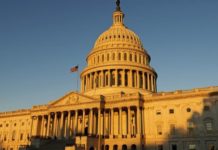
Consider a retired individual, 72 years old, with $100,000 invested in a retirement account at the end of last year, 50 percent broadly invested in stocks and 50 percent in a Treasury bond portfolio.
As of Oct. 27, this model portfolio retirement account has declined in value to $82,400, the worst annual performance of a 50/50 portfolio in the last 60 years per my calculations, including the years of horrible stock market performance in 1973-1974 and 2008.
Adding insult to injury is an IRS mandatory minimum yearly withdrawal requiring individuals 72 or older (with few exceptions) to take annual required minimum distributions (RMDs) from their IRAs, 401(k)s and similar such retirement accounts. This in turn results in the individuals having to pay income taxes on the amount.
The purpose of these distribution requirements is to ensure that income taxes are eventually paid on retirement accounts and that the money is used primarily to support expenses during retirement and not as vehicles to pass tax-free inheritances to future generations. Because this annual distribution is based on life expectancy, the withdrawal amount increases proportionally every year that the account holder remains alive. It is also based on the value of the account as of the end of the preceding year. For the example described above, the RMD is about $3,650, or 4.4 percent of the current account value, and grows as the account holder ages.
It is glaringly obvious though that forcing seniors, during this bear market, to sell off a piece of their investment portfolio to pay for their mandatory annual required minimum distribution, is a burden that will increase their risk of running out of money as they age, particularly in this inflationary environment.
Congress can and should help by temporarily suspending required minimum distributions, and working to reform RMD policy broadly while specifically looking for ways to correct it for market volatility in the future.
Suspension of the required distribution is not without precedent. Congress suspended the RMDs in late 2008 for 2009 and in 2020 when market values declined suddenly and significantly. During 2008, the model retirement account described above fell to about $89,600 (less than the decline thus far this year). Despite a scary beginning with the pandemic, the stock market recovered in 2020 and the Fed’s lowering of interest rates favored bonds (bond prices go up as interest rates go down and vice versa), so Congress’ suspension of RMDs at the time was actually misplaced.
This 50/50 asset allocation, common among senior investors as encouraged by Department of Labor regulations, is intended to reduce risk because it balances out the higher-return stocks that generally rise, but lose significant value during recessions and other negative market events, with the lower-return bonds that generally perform particularly well when recessions hit and inflation and interest rates decline.
What about thus far in 2022? It has been a very bad year for both stocks and bonds, as the Federal Reserve, which kept rates low through 2021 encouraging a stock market high in December, suddenly shifted monetary policy by raising interest rates significantly and selling Treasury bonds from its own portfolio to fight inflation. As is well known, the stock and bond markets have both fallen about 18 percent in value thus far this year, and the prospect for a quick recovery, given the Fed’s continued tightening and a possible recession, is not likely.
While it is late in the year for the IRS to issue new guidance, it is not uncommon for Congress to change tax law in December. In addition, many account administrators are now sending out RMD notices, and some retirees have already taken their distributions for 2022. Allowing individuals to return money back to their accounts during a short open period or postponing the suspension of RMDs to 2023 could address these latter concerns.
Rep. Warren Davidson (R-Ohio) has introduced HR 8331, which would suspend the required minimum distribution rules for 2022. In my view, Congress should consider including this bill as part of any year-end tax package, especially given that this year’s dramatic declines are arguably caused by policy mistakes made by the Federal Reserve when it suddenly decided it would raise interest rates late last year. That policy hit at the worst possible time for RMDs, especially when added to other government mistakes such as an overly expansive fiscal policy (that is, uncontrolled spending) causing inflation, higher interest rates and falling asset prices.
Mark J. Warshawsky is a senior fellow and Searle Fellow at the American Enterprise Institute. He previously served as assistant secretary for economic policy at the U.S. Department of the Treasury, deputy commissioner for retirement and disability policy at the Social Security Administration, and has worked in the retirement plan and investment industry.






